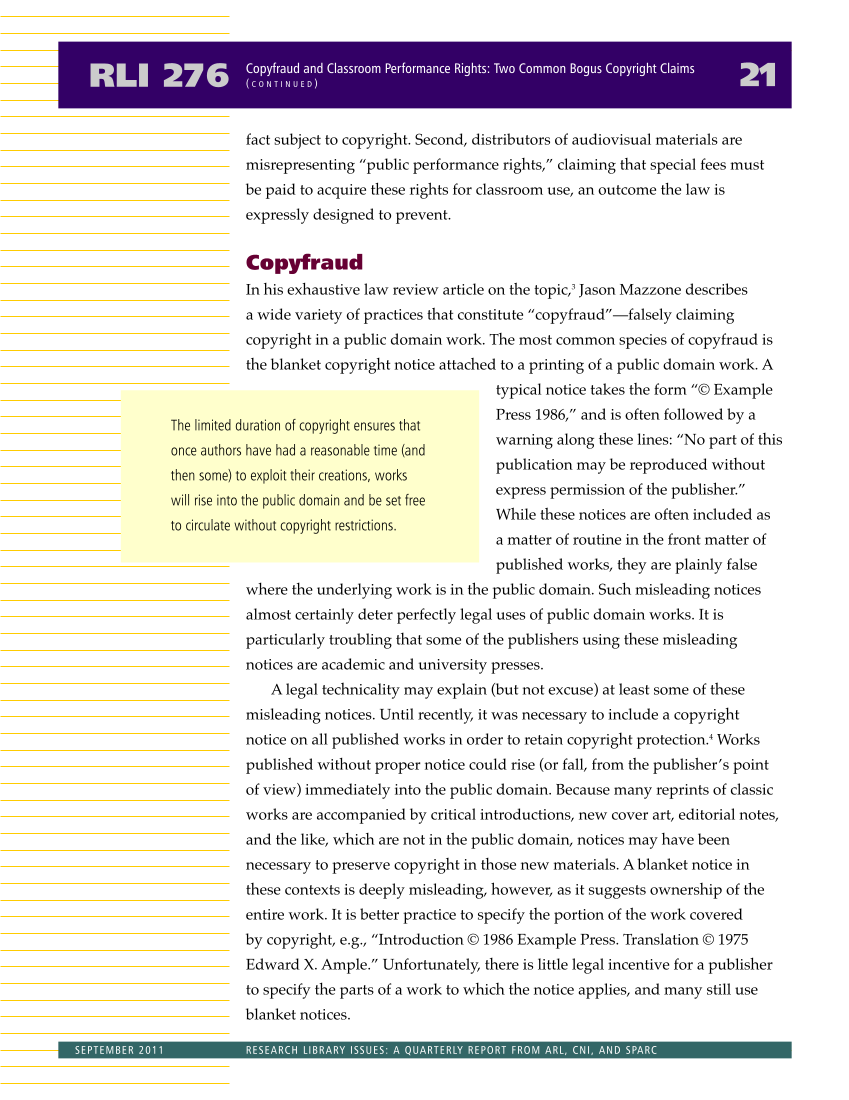fact subject to copyright. Second, distributors of audiovisual materials are misrepresenting “public performance rights,” claiming that special fees must be paid to acquire these rights for classroom use, an outcome the law is expressly designed to prevent. Copyfraud In his exhaustive law review article on the topic,3 Jason Mazzone describes a wide variety of practices that constitute “copyfraud”—falsely claiming copyright in a public domain work. The most common species of copyfraud is the blanket copyright notice attached to a printing of a public domain work. A typical notice takes the form “© Example Press 1986,” and is often followed by a warning along these lines: “No part of this publication may be reproduced without express permission of the publisher.” While these notices are often included as a matter of routine in the front matter of published works, they are plainly false where the underlying work is in the public domain. Such misleading notices almost certainly deter perfectly legal uses of public domain works. It is particularly troubling that some of the publishers using these misleading notices are academic and university presses. A legal technicality may explain (but not excuse) at least some of these misleading notices. Until recently, it was necessary to include a copyright notice on all published works in order to retain copyright protection.4 Works published without proper notice could rise (or fall, from the publisher’s point of view) immediately into the public domain. Because many reprints of classic works are accompanied by critical introductions, new cover art, editorial notes, and the like, which are not in the public domain, notices may have been necessary to preserve copyright in those new materials. A blanket notice in these contexts is deeply misleading, however, as it suggests ownership of the entire work. It is better practice to specify the portion of the work covered by copyright, e.g., “Introduction © 1986 Example Press. Translation © 1975 Edward X. Ample.” Unfortunately, there is little legal incentive for a publisher to specify the parts of a work to which the notice applies, and many still use blanket notices. RLI 276 21 Copyfraud and Classroom Performance Rights: Two Common Bogus Copyright Claims ( C O N T I N U E D ) SEPTEMBER 2011 RESEARCH LIBRARY ISSUES: A QUARTERLY REPORT FROM ARL, CNI, AND SPARC The limited duration of copyright ensures that once authors have had a reasonable time (and then some) to exploit their creations, works will rise into the public domain and be set free to circulate without copyright restrictions.


































